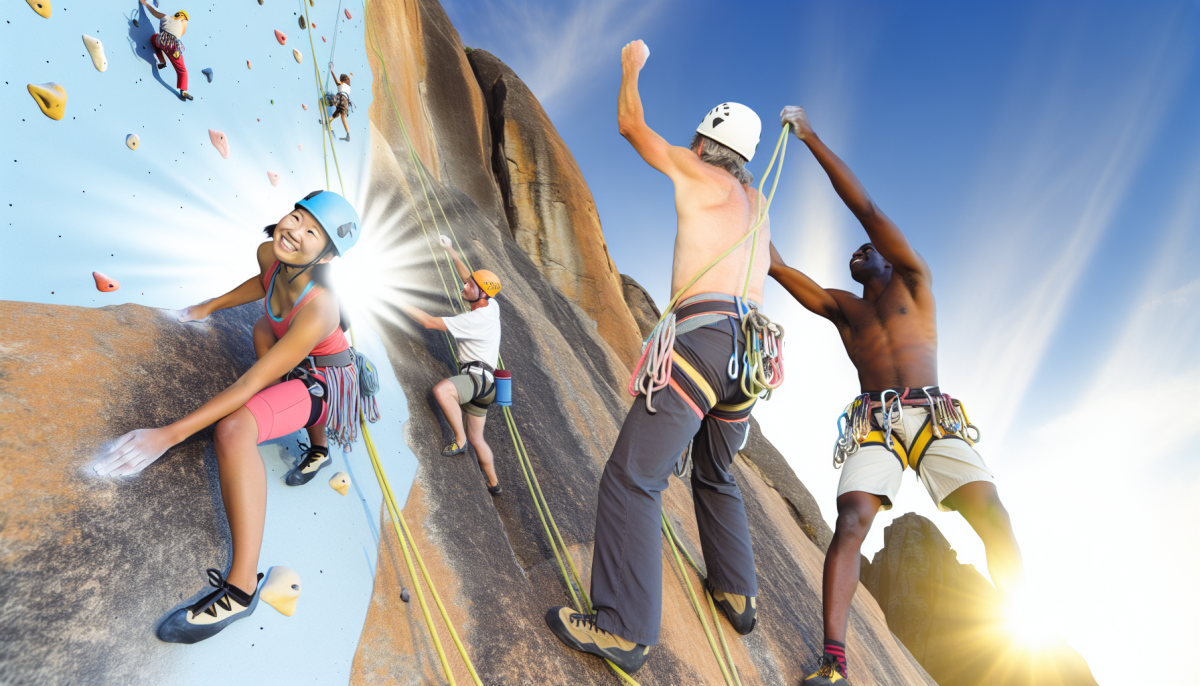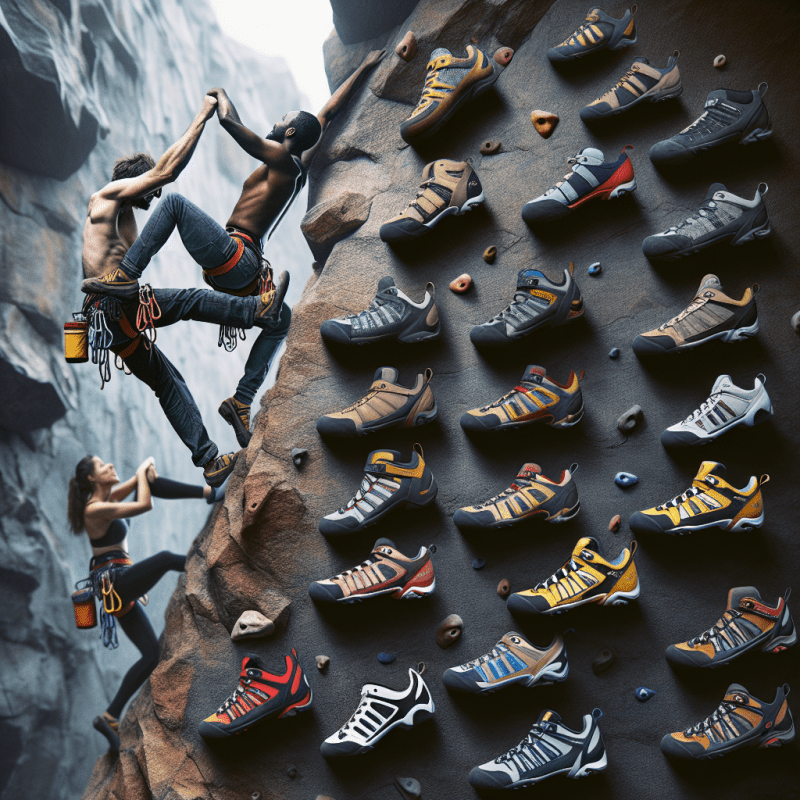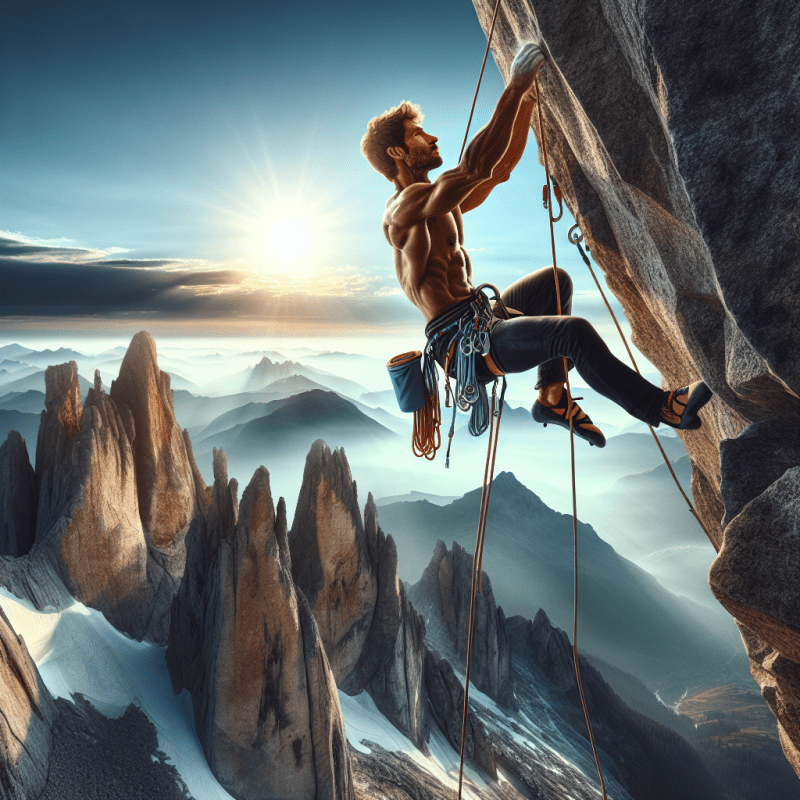When it comes to rock climbing, starting with the right gear is essential for a safe and enjoyable experience. Having the right equipment not only boosts your confidence but also helps improve your performance on the rock face. First and foremost, invest in a good pair of climbing shoes. Climbing shoes provide the necessary grip and support for different types of climbing surfaces. Look for a pair that fits snugly but is not painfully tight; comfort is key as you’ll be spending hours in them.
Another vital piece of gear is a harness. A well-fitted harness will keep you secure while allowing for freedom of movement. Always check the harness for signs of wear and ensure all buckles are properly fastened before you start your climb. You’ll also need a chalk bag filled with climbing chalk to help keep your hands dry and improve your grip. This simple accessory can make a big difference in your climbing performance, making it one of the top rock climbing tips for beginners.
Don’t overlook the importance of a reliable climbing helmet. A good helmet will protect your head from potential falls, loose rocks, or gear drops. Make sure it fits well and is comfortable to wear for extended periods. Finally, familiarize yourself with other gear essentials such as carabiners, slings, and rope systems. Each item plays a crucial role in your climbing safety and efficiency, making them indispensable elements of your climbing arsenal and some of the most practical rock climbing tips to follow.
Master Your Climbing Techniques
Mastering your climbing techniques is crucial for every climber looking to improve their skills. Whether you're a beginner or have some experience, understanding how to use your body efficiently can significantly enhance your performance on the rock face. One of the essential rock climbing tips is to focus on your footwork. Good foot placement allows for better balance and reduces the strain on your arms, enabling you to climb for longer periods without fatigue.
Another key technique is learning to read the rock. Every route presents unique holds and features, and taking the time to analyze them before you begin climbing can make a huge difference. Look for sequences that allow you to move efficiently from one hold to another. This not only helps you conserve energy but also provides a smoother climbing experience. Remember, the way you position your body can affect your ability to reach the next hold, so practice shifting your weight correctly.
Additionally, practice your climbing rhythm. Establishing a natural flow between your movements can help you feel more comfortable on the wall. Breathing rhythmically and timing your movements well ensures that you maintain control and composure during your climb. This is often overlooked but is one of the best rock climbing tips to improve your technique. Consistent practice and trial and error will help you find what rhythm works best for you, allowing you to climb more effectively.
Finally, don't forget the importance of mental focus when climbing. Staying calm and confident can lead to better decision-making on the wall. Visualization techniques can be incredibly beneficial—imagine yourself completing a route in your mind to boost your performance. Mental preparation is as crucial as physical technique, and integrating mindfulness into your climbing practice can elevate your skills. With these rock climbing tips, you will be well on your way to mastering your climbing techniques.
Understand Safety Practices
Rock climbing is an exhilarating sport that allows you to connect with nature and push your limits. However, it's essential to prioritize your safety while enjoying this thrilling activity. Understanding safety practices is one of the most critical rock climbing tips you can learn. Always ensure your gear is in good condition and properly fitted before you start your climb. This includes checking your harness, ropes, and carabiners for any signs of wear or damage.
Another vital aspect of climbing safety is understanding your environment. Before you embark on a climb, take the time to study the route and the conditions it presents. Weather can change rapidly on the mountain, so be prepared for unexpected situations. Knowing the area, including the location of potential hazards and safe landing zones, can prevent accidents and keep you safe.
While it's important to trust your abilities, never hesitate to seek help or climb with a partner. Team climbing can significantly enhance your safety. When you climb with a partner, you can double-check each other's gear and techniques, making it a valuable practice for all levels of climbers. Communication is key; always discuss your climbing plans, signals, and safety measures before starting your ascent.
Finally, one of the most overlooked rock climbing tips is to stay calm in stressful situations. If something goes wrong, remember to take a deep breath and assess the situation carefully. Panic can lead to poor decisions, but staying composed allows you to think rationally and act safely. By following these essential safety practices, you can enjoy rock climbing while minimizing risks and enhancing your overall experience.
Stay Fit and Healthy
Staying fit and healthy is crucial for any rock climber looking to improve their skills and performance. Climbing demands not only strength but also endurance, flexibility, and mental focus. Incorporating a well-rounded fitness routine can enhance your climbing abilities significantly. As part of your journey, consider these essential rock climbing tips that can help you maintain a balanced approach to your health and fitness.
One of the best ways to build overall strength is through strength training. Focus on exercises that target your core, legs, and upper body, since these muscle groups are heavily engaged during climbs. Activities such as pull-ups, push-ups, and planks are excellent choices. Additionally, incorporating movements like squats and lunges can improve your leg strength, which is crucial for powerful foot placements on the wall. These strength training sessions, combined with rock climbing, create a powerful synergy that can boost your climbing performance.
Cardiovascular health also plays a significant role in your overall fitness as a climber. Engaging in activities such as running, cycling, or swimming can increase your stamina, enabling you to tackle longer and more challenging climbs without fatigue. Aim for at least 150 minutes of moderate aerobic activity each week. Mixing these cardio activities with interval training can enhance endurance and mimic the stop-and-go nature of climbing, making it one of the essential rock climbing tips for improving your fitness.
Don’t forget about the importance of flexibility! Incorporating yoga or stretching routines into your training can prevent injuries and improve your range of motion, which is vital in navigating complex climbing routes. Regular stretching can help you maintain good posture and reduce muscle tightness. This way, you’ll be better equipped to handle challenging maneuvers on the wall. Remember, staying fit and healthy is not just about intense training; it’s about maintaining a well-rounded fitness routine that enhances your ability to climb.



